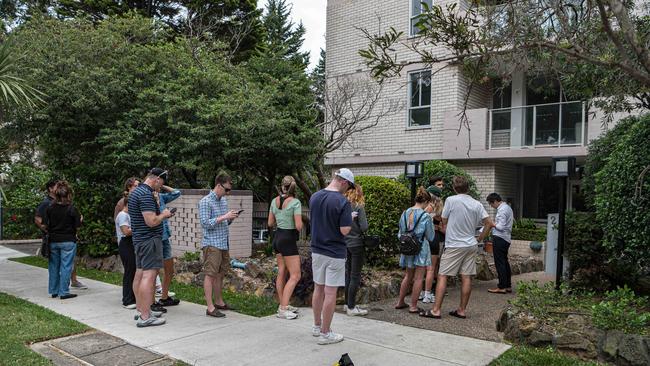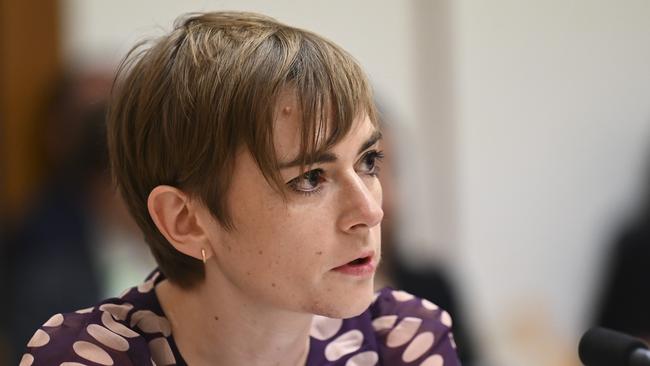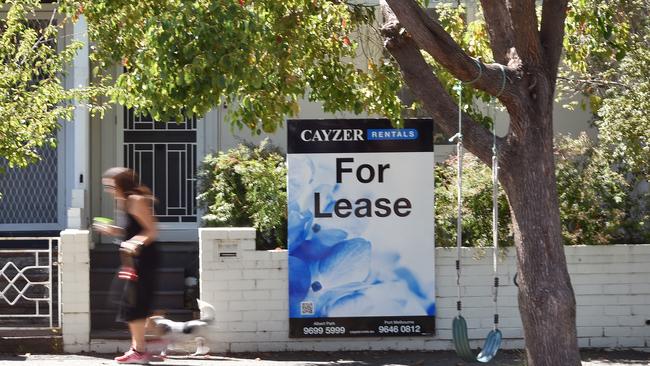Work from home trend helps drive rental demand: Reserve Bank
The rise of Australians with their own home office has contributed to Australia’s rental property shortage, a senior RBA official has warned.

A rise in working from home, which has held household sizes lower, has contributed to increasing demand for rental properties, the Reserve Bank’s chief economist has said.
Since the mid-1980s this figure has slowly fallen, easing from 2.8 per cent in the mid-1980s, and largely driven by lower birthrates and older couples and singles living longer.
Today, Australia’s population of just shy of 27 million live in about 11 million households, meaning the average number of people per household sits at approximately 2.5.
But speaking on Thursday, RBA chief economist and assistant governor Sarah Hunter said the shift to working from home, which was supercharged during the pandemic, had also helped drive this change as Australians look for extra rooms not to house a person, but a computer.

“While some people have returned to their workplace full time, there has been an increase in the proportion of people working from home – for many, a home office space is now highly desirable,” Dr Hunter told a business conference in Hobart on Thursday.
“This suggests that the recent falls in the average number of people per home will be at least partially permanent.”
Should the decline in people per dwelling in the last 40 years be reversed, Dr Hunter said Australia’s housing shortage could be significantly reduced.
“If for some reason the average household size rose back to 2.8, we would need 1.2 million fewer dwellings to house our current population – no small difference,” she added.
Landlords not passing through rate hikes
Later in her address, Dr Hunter claimed there was “little to no evidence” that landlords have passed on the costs of soaring mortgage repayments to their tenants.
With borrowers hit with 13 interest rate hikes in the last two years, landlords like owner-occupiers have seen their repayments surge, raising concerns that these higher costs have been borne by renters.
But the RBA chief economist said preliminary analysis conducted by the central bank showed that higher interest rates were not the primary driver of higher rental prices in the short term.
“The observation that market rents and interest rates move together appears to be a case of correlation rather than interest rate rises causing rents to increase,” Dr Hunter added.
“There is little to no evidence of direct pass through to rents from higher interest costs in the short term.”
Rather, the conditions in the rental market, captured via the vacancy rate, were predominantly to blame for the recent surge in prices.
On most recent measures, rental affordability has fallen to a 17-year low, with the surge in rents growing faster than many other goods and services across the economy.

Dr Hunter also warned there was no “quick fix” for Australia’s housing crisis.
“Demand pressure, and so upward pressure on rents and prices, will remain until new supply comes online,” Dr Hunter said.
“We expect this response to take some time to materialise, given the current level of new dwelling approvals and the information from liaison that many projects are still not viable.”
Historically, a surge in house prices and rents have triggered a wave of new builds as developers seek to capitalise on increased profitability.
However, with a “perfect storm” facing the sector, Dr Hunter said capacity constraints continued to drag on activity.
“Businesses in our liaison program are reporting that finishing trades are currently in short supply, as the bulge of projects started during the pandemic proceed towards completion,” she said.
The senior RBA official’s comments come amid an ongoing political tussle over the soaring cost and anaemic supply of rental properties.
While Labor has thrown its support behind measures that will boost supply of social and affordable housing to ease runaway rental prices, the Greens have backed more unconventional methods, including rental freezes and establishing a public property developer.

